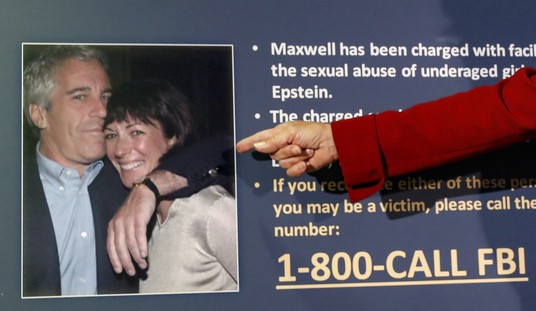Jim Geraghty is wondering if the Tea Party movement is dead. The pithy National Review columnist opines four theories about what happened to the movement ever since it started making waves in 2009, especially in light of Sarah Palin’s endorsement of Donald Trump. Geraghty has plenty of valid points, but it really depends on which Tea Party he’s talking about. The Tea Party which started in early 2009 was a force against taxation, overspending, government bailouts, and its anger had been building for years. It decried the actions of both parties for deciding to not follow the Constitution and to expand government where there was no reason to. Here’s what several people at a Georgia Tea Party rally told The Christian Science Monitor in 2009:
But protesters like Kevin Tanner of South Dakota said deficit spending by both parties has unnerved Americans.
“The Republicans have their own problems because we elected them and they didn’t do what we wanted,” says Mr. Tanner.
Many protesters expressed a sense that basic American freedoms of life, liberty, and the pursuit of happiness are threatened by new Washingtonpolicies seen by many as more socialistic than capitalistic. The proposed taxpayer bailout of homeowners who may have inflated their earnings in order to secure mortgages is one example, says Jeff Crawford, a protester from Dacula, Ga.
Michelle Malkin spent days pointing out the pork inside the 2009 budget, driving home the point it was wasteful spending which wasn’t going to solve anything. Andrew Breitbart went after ACORN, and inspired people to figure out a way to mix politics and culture which didn’t come off as Ben Stein-like (no offense to Stein) in its delivery. The Tea Party of 2009 led to the 2010 election of Rand Paul and Marco Rubio in the U.S. Senate, along with Justin Amash and Tim Huelskamp in the House. Most of these men were willing to challenge the Establishment because they believed in fiscal responsibility, keeping budgets balanced, and restraining the role of government in our lives. But one thing I noticed around late 2010 was a change in the Tea Party protests from a more organic force to an almost religious movement. Maybe the original Tea Party members thought the gains it made in the 2010 election were enough, and decided to go home to focus on their families, jobs, and hoped what was accomplished would be enough to push back against government. For whatever reason, the focus seemed to shift from fiscal responsibility to other things: worshiping God, social conservatism, and, at times, immigration. There’s nothing wrong with this, but that’s not what the Tea Party was founded upon. The first Tea Party rally in Arizona I went to in 2012 was definitely more of a show, and not like the rallies I’d seen on TV, watch online, or read about on blogs. Geraghty also seems to notice a change in the Tea Party’s goals.
The movement has indisputably undergone some uncomfortable ideological contortions over time, as most movements do. Folks who roared with fury about Obama’s big-spending early years showed little appetite for entitlement reform. Those who once fumed about runaway government invading the citizenry’s privacy appear comfortable enough with Big Brother as long as he’s leaving them alone.
It’s possible the shift in focus from “just” fiscal responsibility to fiscal responsibility and a host of other issues is why Tea Party support has fallen. It’s easy to get behind one issue, but things get dodgy when other issues get introduced and muddy up the waters. It could be just the natural order of populism and going from one issue to the other without any real direction. Geraghty also notes the change in focus could be why the Tea Party’s popularity has also dipped, even though more and more state governments are in the hands of the GOP.
After the 2014 midterms, the Republican party enjoyed a roaring comeback; all told, they’ve now picked up 11 governorships, 13 Senate seats, 69 House seats, 913 state legislative seats, and 30 state legislative chambers in the Obama era. But the Tea Party’s reputation never recovered. In 2011, 30 percent of Americans told Gallup they considered themselves “tea-party supporters.” By October 2015, only 17 percent said the same.
Geraghty may be right in declaring the Tea Party dead, but there are still elements of the Tea Party running strong. Dana Loesch, FreedomWorks, Ace of Spades, The Foundation for Government Accountability, FTR Radio, and, oh yeah, Hot Air are still around and still fighting for the ideals the Tea Party stood for from a fiscal standpoint. Thomas Massie, Justin Amash, Rand Paul, Greg Abbott, Scott Walker, and Ted Cruz are all still in their elected positions and (mostly) fighting for the financial sanity the 2009 Tea Party protests were all about. This could just be the natural order of movements: they grow, they wither, and their seedlings sprout up to continue on the mission of their parent. It isn’t always going to be easy, but that doesn’t mean what happened in 2009 should be forgotten. What it does mean is the fiscal hawks need to keep fighting and keep explaining why sanity is needed. This means things like entitlement reform, audits of the Fed and Defense Department, and cutting government where it needs to be cut (no more farm subsidies please) are all issues which have to be pressed, but messaged in a way to get more people involved. It also means holding elected officials (at all levels) accountable. It could mean a “Primary ______” movement, but it could also mean calling elected officials to ask why they voted the way they voted, or showing up to town hall meetings to raise concerns. The steam may have blown off the fiscal Tea Party but it doesn’t mean its mission is over. The question is who’s going to be willing to take up the mantle?








Join the conversation as a VIP Member